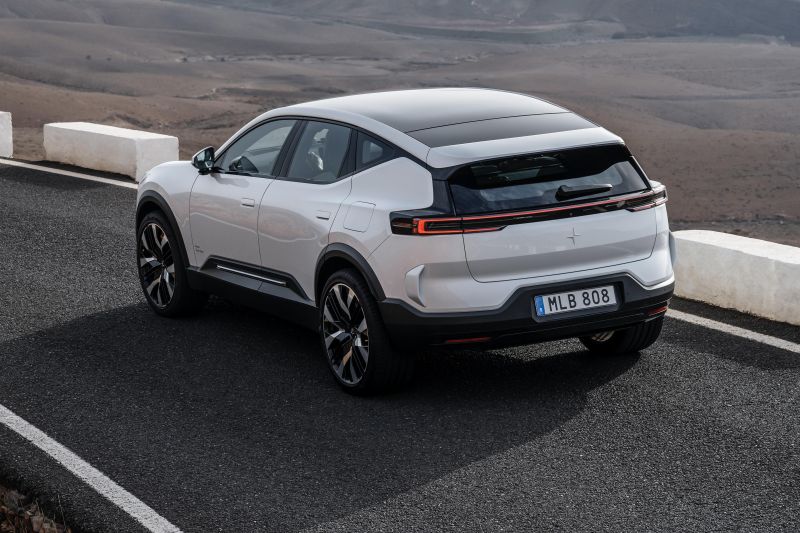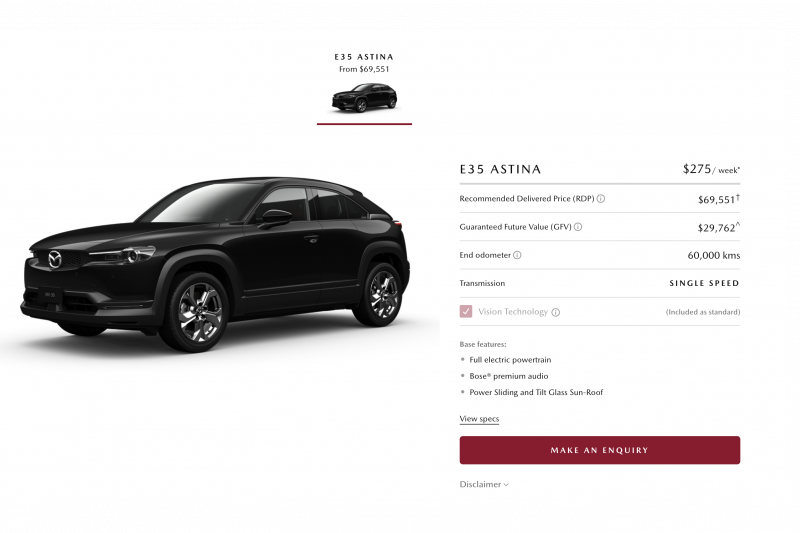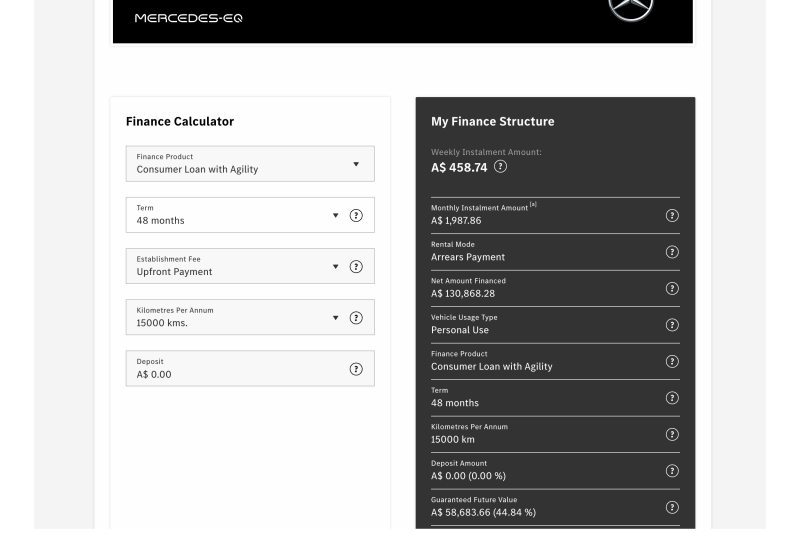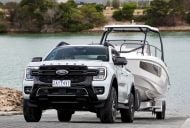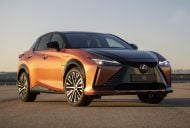Have you ever wondered what depreciation or resale value looks like on electric vehicles? This is a question a lot of buyers are asking as they look into buying their first EV.
It’s a bit of an art to work out what an electric vehicle will be worth in the future. If it’s a Tesla you can have a look at cars that are a few years old on a classified website, but that’s not really a true indication as those are advertised prices, not sold prices.
Nonetheless, there is one way to know with some level of reasonable assurance what you’ll get back for your car in a few years, and that’s to pick a guaranteed future value program from the many manufacturers offering it.
For the purpose of this experiment I picked a four-year term, covering 15,000km a year (60,000km total), and no deposit for personal finance as a Brisbane buyer looking to buy an electric SUV. I went with the finance and guaranteed future value offer from the car company’s own website.
What became clear really quickly is that buying an electric vehicle is one thing, trying to get a reasonable guaranteed future value is another.
What was even more surprising, however, was the difference in future value guarantees between established brands like Mazda and Mercedes-Benz compared with an upstart like Chinese brand Polestar when it comes to EVs.
Let us put some numbers in perspective. If we take the new Polestar 3, a standard model costs $146,806.85 on the road for someone like me who lives in Brisbane according to the brand’s own configurator.
Pick the Long Range Dual Motor with Performance Pack ($9000) with a set of decent headlights ($3000, really should be standard), and ignore the additional safety Pilot Package ($6000, which again should be standard) and the drive-away price for Brisbane buyers is $162,471.85.
That’s a lot of money in general, but for a car made in China where labour costs are significantly cheaper than European or Japanese brands? It’s definitely up there. Giving Polestar the benefit of the doubt (who knows, it could be excellent and we are yet to drive it) and ignoring the actual high price for a moment, what would you hazard a guess that Polestar’s own finance package currently says the car will be worth in four years and 60,000km assuming you have kept it in great condition?
Go on guess. $90,000? No. $80,000? No… Surely $70,000? Nope. Ok, ok, $60,000? No.
Polestar’s own website says the Polestar 3 at $162,471.85 new will be worth just $59,436.00 four years and 60,000km later. The brand says its own car will be worth just 36.5 per cent of its original value in a short few years and not many kilometres.
That’s a loss of $103,035.85 – or $25,758.96 of depreciation per year. If you look at it from a per-kilometre perspective, it’ll cost you $1.71per kilometre to own, let alone recharge. Fuel might be expensive, but that depreciation is something else.
Is that the same for all electric cars? The answer is definitely not. How does the Polestar compare to say a Mazda MX-30 electric?
It hasn’t been all that much of a success for the Japanese brand, which would suggest it would have limited resale appeal given it’s had such limited demand to start with new.
According to Mazda Australia’s website, a Brisbane buyer like me would have to pay about $69,551 for an MX-30 pure electric on road. After four years and 60,000km, the brand will buy its own car back for $29,762. That’s a loss of $39,789 over four years, or $9947.25 per year.
Do the numbers per-kilometre and it works out to be just $0.66 cents. All of a sudden the Mazda is looking pretty attractive, but it’s probably not the fairest comparison because the Polestar is a luxury car and the Mazda is more mainstream.
Let’s look at the ultimate king in luxury, Mercedes-Benz. For comparison’s sake, we picked a Mercedes-Benz EQC 400 4MATIC which you can buy right now online at $130,868.28.
Applying the same formula of four years, 60,000km, and no deposit, Mercedes-Benz will buy back its own car for $58,683.66 – or a very credible 44.84 percent of the original purchase price.
Mercedes-Benz is so confident in its vehicles, it offers this 45 per cent guaranteed value across all the SUVs we had time to test whether they’re diesel, petrol, or pure electric.
That’s a loss of $72,185 over four years or about $18,046 per year in the case of the EQC. Do it on a per-kilometre basis and it works out to be $1.20/km.
We also did the test on a Lexus UX EV which has a drive-away price of $87,594 in Brisbane. Based on the same four years, 60,000km conditions and no deposit, Lexus would buy the UX EV back for $38,110 – a loss of $49,484 over four years, or $12,371 a year.
On a per-kilometre basis, it works out to be just $0.82 cents per km. Not bad.
Lets put all that in a table:
| Electric Vehicle | New Price* | 4-yr/60,000km future value ** | 4-yr depreciation | Depreciation/km |
|---|---|---|---|---|
| Polestar 3 | $162,471.85 | $59,436 | $103,035.85 | $1.71 |
| Mercedes-Benz EQC 400 4MATIC | $130,868.28 | $58,683 | $72,185 | $1.20 |
| Lexus UX300e | $87,594 | $38,110 | $49,484 | $0.82 |
| Mazda MX-30 EV | $69,551 | $29,762 | $39,789 | $0.66 |
The point is, electric cars might be the future, but picking the right brand is likely going to save you tens of thousands and a lot of heartaches when it comes to resale.
Just like petrol or diesel vehicles, not all electric vehicles will have the same resale. It’s absolutely worth understanding and doing some research into what the future resale value of your potential electric vehicle might look like.
* New car price based on Brisbane postcode 4000 and private purchase
** Value as presented by OEM’s own finance calculator based on four-year term, no deposit, and 60,000km in total






